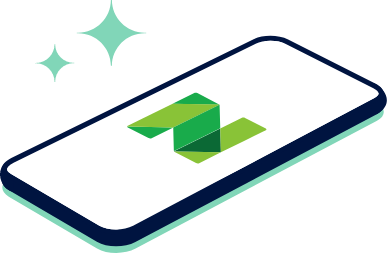What Is Revolving Credit?
Revolving credit allows borrowers to spend up to a credit limit determined by the lender and pay back the amount at once or over time.

Many, or all, of the products featured on this page are from our advertising partners who compensate us when you take certain actions on our website or click to take an action on their website. However, this does not influence our evaluations. Our opinions are our own. Here is a list of our partners and here's how we make money.
Revolving credit is a common type of credit. The lender sets a credit limit and the borrower chooses how much to spend (up to that limit). Each month, the borrower can pay off the balance in full or a portion of it with interest payments over time.
If you have a credit card, the revolving credit setup probably sounds familiar, but it's not the only type of revolving credit. Here's what to know about revolving credit, including how it works and how it can impact your credit score.
How does revolving credit work?
There are three major components of revolving credit:
- Credit limit: The lender sets the credit limit or the maximum amount the borrower can spend.
- Minimum payments: The lender also sets a minimum payment each month. Borrowers must pay at least that amount to avoid credit score harm. Ideally, however, the borrower will pay the full balance to avoid interest and racking up debt.
- Replenishment: Revolving credit is reusable. Once a borrower pays off what they’ve spent, the full credit limit becomes available again.
Payments for revolving credit can vary from month to month, and the credit is available to the borrower as long as they are in good standing with the lender. In these ways, revolving credit differs from installment credit, where payments are divided into fixed parts to be paid by the borrower until the loan balance is zero. Examples of installment credit include mortgages and auto loans.
Stress less. Track more.
See the full picture: savings, debt, investments and more. Smarter money moves start in our app.
Revolving credit examples
The three most common types of revolving credit are credit cards, personal lines of credit and home equity lines of credit, or HELOCs.
Credit cards
Potential borrowers apply for a credit card of their choosing and if approved, lenders set a credit limit. Borrowers can then use the credit card for purchases, up to that credit limit, and have a few options for payment amounts: the full balance; the minimum set by the lender; or a portion of the balance that’s not the minimum. Any remaining balance rolls over to the following month, and the borrower will be charged interest.
Personal lines of credit
A personal line of credit is a loan that works like a credit card and can be used for almost any purpose. Borrowers are given a limit and are charged interest on what they use. Personal lines of credit typically have a “draw period,” during which the borrower can use their credit line and receives a monthly bill. After two to five years, the borrower enters a “repayment period,” making principal and interest payments.
Home equity lines of credit (HELOCs)
In a home equity line of credit, homeowners can take out a second mortgage on their home to access cash based on the value of their home and the equity they’ve accrued. Borrowers can draw from the home equity line and pay it off at once or monthly.
To calculate your equity, take your home’s market value and subtract the amount you owe on the mortgage. The difference is the equity.
Consider the pros and cons of revolving credit
Revolving credit can be a convenient and flexible way to make everyday purchases or cover larger expenses that you can pay for over time in more manageable chunks. It can also provide a safety net if there’s a financial emergency. Responsibly managing your revolving credit can also result in an elevated credit score and make you more attractive to future lenders.
One of the disadvantages of revolving credit is the variable interest rate that fluctuates over time based on a variety of factors. For borrowers who carry a balance from one month to the next, rate changes can make it difficult to pay down the principal balance because the bulk of each payment is going toward the interest. If fluctuations happen frequently, it can be challenging to budget.
Revolving credit can also carry fees, especially if borrowers exceed credit limits, miss payments or have to pay annual fees to access special benefits, as is the case with some credit cards.
With revolving credit, there may also be a greater risk of accruing debt than with installment credit, where the payments are divided into equal and predictable amounts each month. Revolving credit payments can vary based on your spending, and it's up to you to spend responsibly within your predetermined credit limit.
How does revolving credit impact your credit score?
Successfully managing revolving credit involves the two biggest factors used to calculate your credit score: payment history (paying your bills on time) and credit utilization (how much of your available credit you are using).
If you’re using more than 30% of your available credit, your credit score will suffer. Aim to keep your utilization as low as possible, ideally under 10%.
Paying more than the minimum each month and tracking your spending could help keep your utilization below that 30% threshold. Some credit cards allow you to set alerts if you’re approaching a designated limit, which could help you reduce spending and make a plan to pay down your debt.
Making payments on time is also key. One missed payment can linger on your credit report for up to seven years and harm your credit score. Generally, the higher your credit score, the more significant the drop — but other factors might come into play, including how late your payment is or if you have a history of missing payments.
Setting up automatic payments and marking your calendar can help you avoid a missed payment. If you find it hard to keep track of your bills, you can consolidate your due dates so they’re easier to remember. For example, if you get paid twice a month, consider grouping your bills around those days so you’ll have the money to pay them. If you miss a payment, try calling your lender and asking for forgiveness, especially if this is a rare occurrence.
Stress less. Track more.
See the full picture: savings, debt, investments and more. Smarter money moves start in our app.
Article sources
NerdWallet writers are subject matter authorities who use primary,
trustworthy sources to inform their work, including peer-reviewed
studies, government websites, academic research and interviews with
industry experts. All content is fact-checked for accuracy, timeliness
and relevance. You can learn more about NerdWallet's high
standards for journalism by reading our
editorial guidelines.
Related articles









